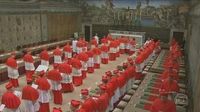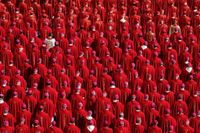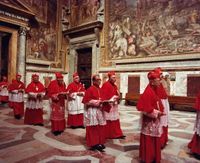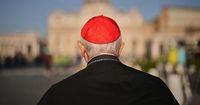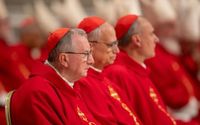The Vatican is set to host a conclave beginning on May 7, 2025, to elect the successor to Pope Francis, who passed away on April 21, 2025, at the age of 88. The event is steeped in centuries-old tradition and will take place in the iconic Sistine Chapel, a site known for its breathtaking frescoes by Michelangelo and its historical significance in papal elections.
The conclave will see 133 cardinal electors participate in the voting process, a number that has decreased from 135 due to health issues affecting two cardinals, including the Spanish cardinal Antonio Cañizares and potentially the Bosnian Vinko Puljic. The absence of these cardinals highlights the challenges faced by the Church as it prepares for a pivotal moment in its leadership.
The Sistine Chapel, constructed between 1477 and 1480 under the direction of Pope Sixtus IV, will serve as the backdrop for this important event. Its dimensions mirror those of the legendary Temple of Solomon, measuring 40.5 meters in length, 13.2 meters in width, and 20.7 meters in height. The chapel is adorned with stunning artworks, including Michelangelo's renowned "The Creation of Adam," which illustrates the biblical moment of God giving life to humanity.
As the cardinals gather, they will engage in a series of General Congregations, where they will discuss the pressing challenges facing the Church today. These meetings began on April 28, 2025, and will continue until the conclave starts. The discussions will touch on various geographical perspectives, reflecting the diverse backgrounds of the cardinals.
During the General Congregation held on April 29, 2025, Abbot Donato Ogliari emphasized the necessity for the Church to confront its challenges during this transformative time. He urged the cardinals to approach their task with the spirit of renewal akin to a modern-day Pentecost, where the Holy Spirit ignites passion and purpose.
In a press briefing, Matteo Bruni, the director of the Holy See Press Office, confirmed that the names of the absent cardinals would not be disclosed, adding that the number of electors could fluctuate until the last moment. The cardinals are sworn to secrecy regarding all discussions and decisions made during the conclave, a tradition designed to uphold the integrity of the election process.
For a cardinal to be elected, he must secure at least two-thirds of the votes, which translates to 89 votes. The voting process will begin with one vote on the first day, followed by two votes each morning and afternoon in subsequent days. The votes will be cast in secret, and the results will be communicated to the world through smoke signals from the chimney of the Sistine Chapel: black smoke indicating no decision and white smoke announcing the election of a new pope.
Historically, the conclave has been a moment of intense speculation regarding potential candidates. Currently, 108 of the 135 eligible cardinals were appointed during Pope Francis's papacy, which raises expectations for a continuation of his reformist agenda. However, the dynamics within the conclave can be unpredictable, and the outcome remains uncertain.
Experts suggest that the next pope will need to navigate complex issues such as the Church's response to global secularization, the ongoing challenges of clergy abuse scandals, and the geopolitical shifts affecting Catholic communities worldwide. The diverse backgrounds of the cardinals—representing various regions, including Europe, Latin America, Africa, and Asia—will play a crucial role in shaping the future direction of the Church.
As the cardinals prepare for the conclave, they will also engage in personal reflections and community-building activities. Reports indicate that some cardinals have taken the opportunity to dine together in local restaurants, fostering camaraderie before the solemnity of the conclave begins. However, the light-hearted moments will soon give way to the gravity of their responsibilities.
On the day of the conclave, the cardinals will participate in the Missa Pro Eligendo Papa, a mass held in the Basilica of St. Peter, which will be presided over by Cardinal Giovanni Battista Re. Following the mass, the cardinals will process to the Sistine Chapel, where they will take an oath of secrecy before commencing the voting.
The anticipation surrounding this conclave is palpable, as many believe it could lead to a significant shift in the Church's leadership style and priorities. With the legacy of Pope Francis hanging in the balance, the choice of the new pope will undoubtedly have profound implications for the Catholic Church and its followers around the globe.
As the world watches, the cardinals are reminded of their sacred duty to choose a leader who will guide the Church through its current challenges and into the future. The conclave is not only a moment of decision-making but also a reflection of the faith, hope, and unity that the Catholic Church seeks to embody.
